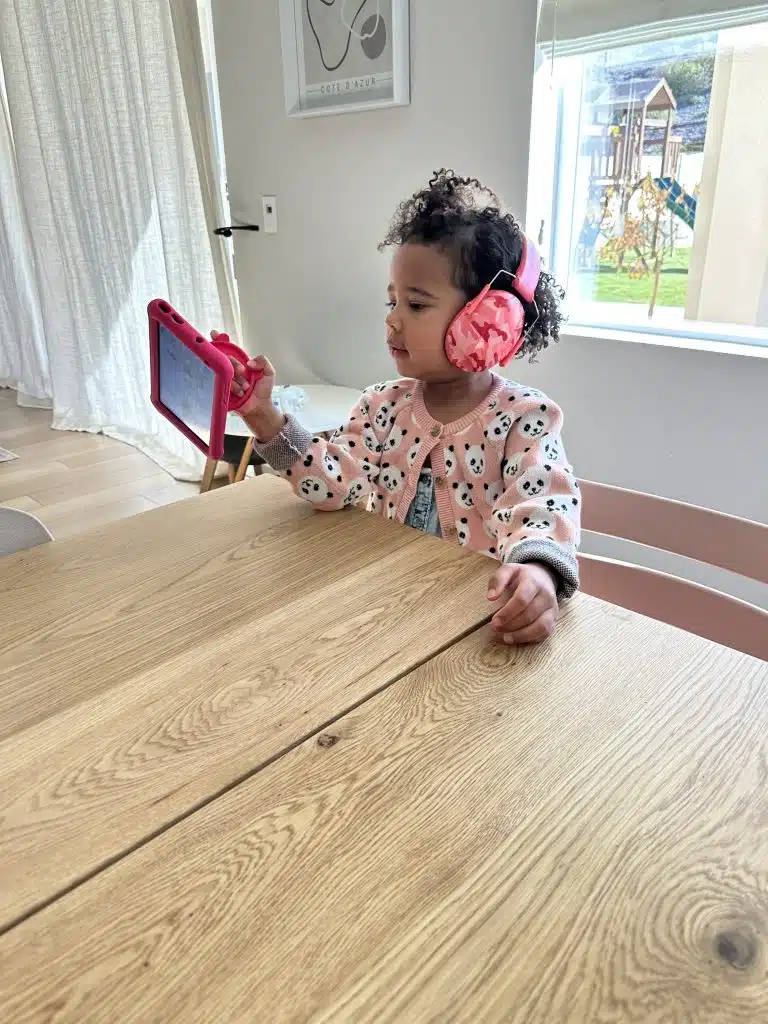Noticing your child struggling with letter recognition can be a source of worry, but you’re not alone in facing this challenge. In this helpful guide, we’ll take you through practical methods to support your neurodivergent child’s budding recognition skills. We’ll delve into multisensory techniques, targeted teaching strategies, and the power of technology to provide the tools your child needs to overcome their obstacles. From hands-on activities and custom flashcards to learning tablets like Goally, this blog will detail a comprehensive approach to letter recognition mastery.
Table of Contents
SPONSORED BY: Goally
Goally’s Kid’s Tablet has one of the largest libraries of skill-building videos (like “How to Share” and “What To Do When You’re Lost”) in the Goal Mine app.👇
A Multisensory Approach for Enhanced Letter Recognition
Embracing a multisensory approach is vital when supporting a child struggling with letter recognition, particularly for neurodivergent kids. By engaging all the senses, we create an immersive learning experience. So, what does a multisensory approach look like in practice? Here are some techniques to incorporate:
- Visual: Flashcards, magnetic letters, and letter games provide visually stimulating opportunities for learning.
- Auditory: Ensure the child hears each letter’s name and sound by using audio content like songs or stories.
- Tactile: Hands-on activities, such as tracing or forming letters with playdough, allow tactile exploration.
- Kinesthetic: Practice writing letters in the air or on different surfaces to engage the body and enhance muscle memory.

Remember, variety is essential. Mixing up these techniques will help maintain your child’s curiosity and interest while providing a well-rounded learning experience.
Effective Teaching Strategies for Letter Recognition
When helping your child improve their letter recognition skills, targeted teaching strategies play a crucial role. Here are some key steps to take:
- Start with meaningful letters: Introduce letters with personal significance (such as their name) to create a strong connection.
- Teach upper and lowercase together: Together, you’ll help them recognize different forms of the same letter.
- Focus on one letter at a time: Mastery of one letter before moving on reduces confusion and increases retention.
- Utilize repetition: Consistent practice with specific letters will boost your child’s recognition abilities.
- Make connections: Linking letters to familiar objects promotes understanding and retention (e.g., “A for apple”).

Integrating these strategies into your child’s daily routine will support their letter recognition journey effectively and adaptively. Patience and consistency are key!
Embracing Technology to Boost Letter Recognition
Technology offers a range of resources to help your neurodivergent child’s letter recognition growth. With apps, learning tablets like Goally, and more, tech-based solutions can engage and assist kids with thinking and learning differences. Here’s how you can use technology to your advantage:
- Letter-recognition apps: Interactive games and activities focused on letters help identify and differentiate between them effectively.
- Customizable digital flashcards: Create a tailored learning experience by making digital cards with letters and corresponding images.
- Devices like Goally: Learning tablets crafted for neurodivergent kids offer custom educational content and reinforce important skills.
- E-books: Adjustable fonts, colors, and text-to-speech options create a supportive reading experience for letter recognition challenges.
As with any intervention, monitoring progress and adjusting strategies will ensure the most significant impact on your child’s letter recognition improvement.
Monitoring Progress and Adjusting Course When Needed
It’s essential to keep an eye on your child’s progress and be prepared to modify teaching strategies. While embarking on this important journey, consider the following:
- Set realistic expectations: Neurodivergent kids may need extra time and patience to excel in letter recognition.
- Stay flexible: Be open to changing methods or trying new techniques if one simply isn’t working.
- Celebrate small victories: Recognize and praise your child’s improvements to build confidence and perseverance.
- Seek professional support: Occupational therapists, speech therapists, or specialized tutors can provide expertise and guidance.
The flexibility to adjust your approach and the dedication to celebrate small wins will foster a nurturing and supportive environment for your child.

“I found Goally on Instagram a few months ago and I thought, this sounds like a perfect aid for Ivy. Ivy had just started speaking, but her communication was still very minimal. Goally’s visual schedule and AAC-inspired Talker had me really interested. While we want and believe Ivy will find her voice and spoken language, we also believe that communication comes in many forms. Goally has helped us offer our daughter a voice while she learns to find her own. The key is to support communication in whatever form that takes.” – Cassidy I.
Supporting Your Child Struggling with Letter Recognition
Ultimately, with a blend of multisensory techniques, tailored teaching strategies, and technology-based tools, you’re well-equipped to help your neurodivergent child overcome letter recognition challenges. Monitor your child’s progress and be open to adjusting your approach, ensuring an engaging learning environment. Your patience and guidance will empower your child to conquer the alphabet at their own pace and with confidence.
This post was originally published on 05/13/2023. It was updated on 07/14/2023.

Goally
We help parents teach their kids life skills, like doing bedtime and morning independently. Backed by science, we incorporate evidence-based practices and expert-informed designs in all of our apps and content.






